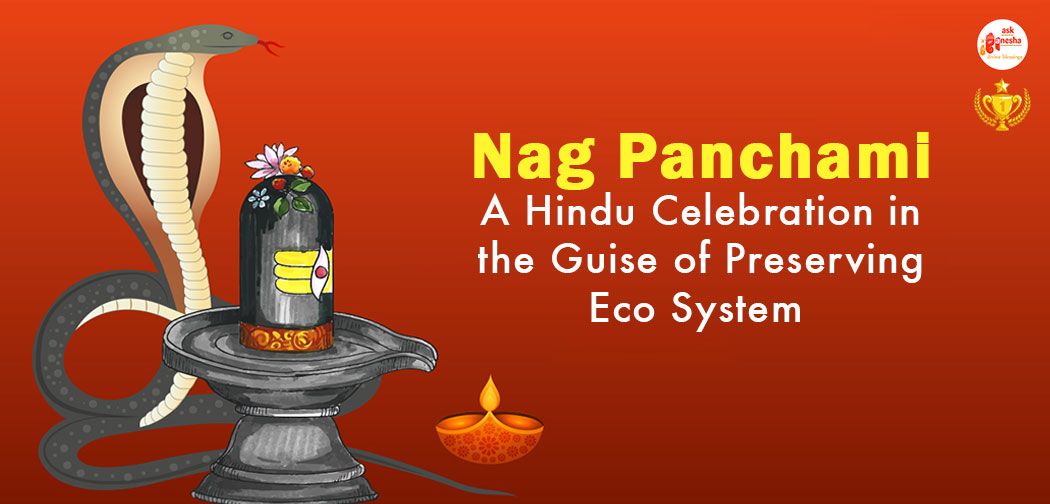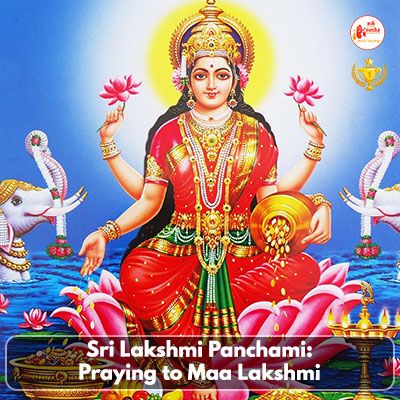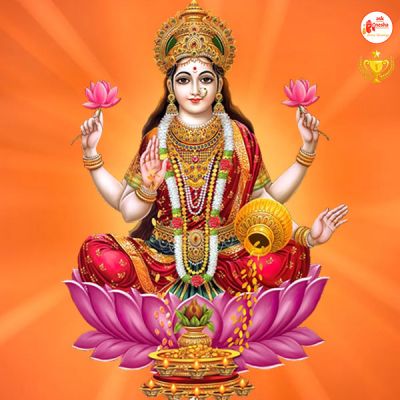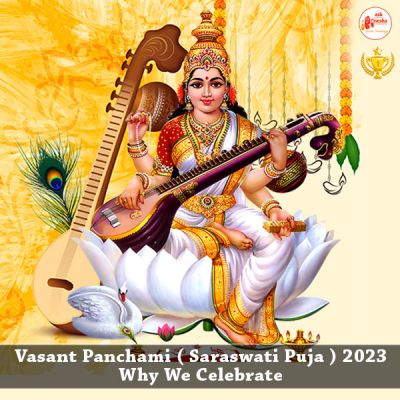Nag Panchami is a notable Hindu festival in which the Nagas or snakes are worshipped. Nagas are serpent deities according to Hindu mythology. The occasion is celebrated on the 5th day of the bright half of the lunar cycle in the month of Shravana that falls in the months of July/August as per the Hindu calendar. The word "Nag" means snake and "Panchami" hints at the fifth day. Here we are trying to highlight some key aspects and traditions related to Nag Panchami.
On the day of the festivity, people go on worshipping live snakes, idols, or pictures of snakes. They offer milk, rice, sweets, and many other offerings to the Nagas. Snake charmers are hired to bring live snakes to various temples so that they are worshipped. Devotees fast on the very day and visit temples that are dedicated to snake deities. They pray there, chant mantras, and perform various rituals to seek blessings and protection from the wrath of snakes. Some people draw figures of snakes on the walls with a peculiar mixture of cow dung and mud.
Nag Panchami is believed to dispel the fear of snakes and protect against their bites. It is also considered auspicious for married couples, who go on praying for the well-being and longevity of their respective husbands, wives and children. The festival is celebrated with variations in different corners of India. In some places, people go on celebrating the day with enough pomp and grandeur and on the other hand people go on worshipping the Nag Deity with utmost devotion round the clock to appease Him.
The occasion also tells of highly of the importance of conserving snakes. Many organizations and community workers use the occasion as an opportunity to create awareness among the people of the ecological significance of the snakes and their respective role in maintaining the balance of the very ecosystem. Nag Panchami is a festival to honor snakes and seek their blessings and protection. It is a particular occasion to express reverence for these creatures that are regarded deadly and to promote their conservation. Along with it the celebration of the rich mythology and cultural heritage of India goes on too.
The Auspicious Occasion Nag Panchami
Nag Panchami is an auspicious occasion of the Hindu community that falls in the Hindu calendar of Sawan, just when the rainy season lashes the earth with her sweet showers and the cultivators of India become ready to go on sowing crops. Just at this crucial juncture of seasonal moments falls the occasion, a festival dedicated to the snakes but highly auspicious while observed. This year according to Hindu Panchang the festival falls on 2nd August.
All about Nag Panchami
It is a Hindu festival that is observed almost in every corner of India where people go on worshipping the snakes. This occasion falls on the Panchami tithi or on the 5th day on the Shukla Paksha or the bright lunar phase. The occasion is observed in the month of Sawan, a highly auspicious occasion esteemed by the Hindus of India as the snakes are worshipped on this very day. This day takes place just one day after the Hariyali Teez, another colorful occasion of India. According to the English calendar this occasion falls in the month of either July or August. Women round the country offer milk to the snakes and worship the Nag Deity. They pray to the deity for the well being of their families particularly of their brothers.
Puja Rituals of Nag Panchami
This day has a special significance for the people of India especially for those who abide by the auspiciousness of the day. To focus on the Puja of the Nag Panchami we are going to highlight the Puja rituals of the holy day. Once you go through it, you are sure to get a clear view of the holiness of the occasion.
• Get up early in the morning and clean yourself.
• Clean the Puja room with fresh water.
• Spread a clean cloth on the wooden platform. Keep an image or idol of the snake deity there.
• On the right side of the idol light a ghee lamp.
• Take a resolution within and vow to complete the Puja with utmost earnestness
• Sprinkle Ganges water on the idol.
• Offer the idol sandal paste, turmeric, akshat, flowers, vermillion, kumkum, incense sticks and other offerings.
• Close your eyes and pray to the Nag deity.
• Pray to the nag Deity so that he/she can pardon you if you commit any mistake while worshipping the deity.
• To obtain blessings of the Nag Deity chant the Nag panchami Mantra
• Om Bhujongeshay vidmohe
• Sarporajay Dhimohi
• Tanno Naga prochodoyat.
• After competition of the Puja it is ideal to go for aarti.
Astrological Significance of Nag Panchami
In astrology the snakes have a special place. In the Hindu religion Lord Shiva wears a snake as ornament round His neck, Lord Vishu is seen to take rest on the coiled place of a six headed snake named as Anant Nag. Every coil of the snake represents the time. Every coil is the symbol of past, present and future. On the other hand according to the Hindu religion on the head of Sesh Nag the balance of the Earth or Prthvi rests. Hence it is ideal to give great importance to the snakes. As an obvious result, according to Hindu religion and Vedic astrology if various problems and doshas are found in one’s birth chart, he/she may get blessings of the deity if she/he goes for worshipping snakes.
All astrologically afflicted people can avert their problems with the proper worship of the snake deity. Rice cooked in milk, basically known as Ksheer is the most favorite of the nag Deity. If it is given as offering, the deity may be appeased and goes on blessing the devotee. It is a general method to pacify the Nag Deity offering milk and ksheer. People who are much afflicted go on for the special worship of the Deity and pray to Him. They pray and beg pardon if any mistake is committed by sheer chance unknowingly. In this way it is known that people may get relief from the kal Sarpa dosha found in their birth chart. But the main thing is to keep utmost faith on the deity and observing fast for the day.
Story Behind Nag Panchami
Nag Panchami has several stories associated with it. Here are a few prominent ones that we are going highlight.
The Legend of Lord Krishna and Kaliya is one of the most well-known legends associated with the occasion. We have told our readers beforehand the story of Lord Krishna and the serpent Kaliya. According to the myth, Kaliya was a venomous serpent that lived in the Yamuna River. The poison of the snake polluted the river in a bad manner and made it unsafe for the local people and animals.
The moment Lord Krishna came to know about this, he decided to nab Kaliya. Krishna jumped into the river and engaged in a fierce fight with the deadly serpent. After a tremendous fight Krishna defeated Kaliya and forced him to admit that henceforth he would not make the water of the river poisonous. This victory over the deadly snake symbolizes the triumph of virtue over vice.
Another Story Behind Nag Panchami
It is the story of king Janmejoy. In the tale, it is told that king Parikshit was bitten by snake Takshka and died. To take revenge of his father’s death son Janmejoy decided to carry on a jagna named Sarpa jagna to kill all kinds of snakes including the deadly Takshaka. He started the jagna and killed many snakes. Being panic stricken the king of snakes Vasuki asked Astika, the son of Snake Goddess Manasa and sage Jaratkaru, to stop this deadly jagna. Astika having been deeply concerned about the well-being of snakes came to the place of the jagna to protect them. He approached King Janamejaya, who was performing the snake yagna to eliminate all snakes from the world.
Astika intervened, snake sacrifice was halted and the snakes were saved. This story highlights the very importance of snake conservation and the role of Astika in preserving the lives of the snakes. In some parts of India, Nag Panchami is also associated with the Puja of the snake goddess, Manasa Devi. According to the Indian scriptures, Manasa Devi is the daughter of Lord Shiva and sister of Lord Ganesha.
Finally to say
All The mythological stories and anecdotes referred here highlight the significance of snakes in Hindu mythology and various encounters associated with them. Nag Panchami is a way to honor and appease the serpent deities whoever he/she may be to seek his/her blessings, protection, and goodwill. Again we should not forget the vital message that all these efforts were to save snakes and restore the eco-system.
For interesting astrology videos & Post, follow us on Instagram
























 Translate
Translate